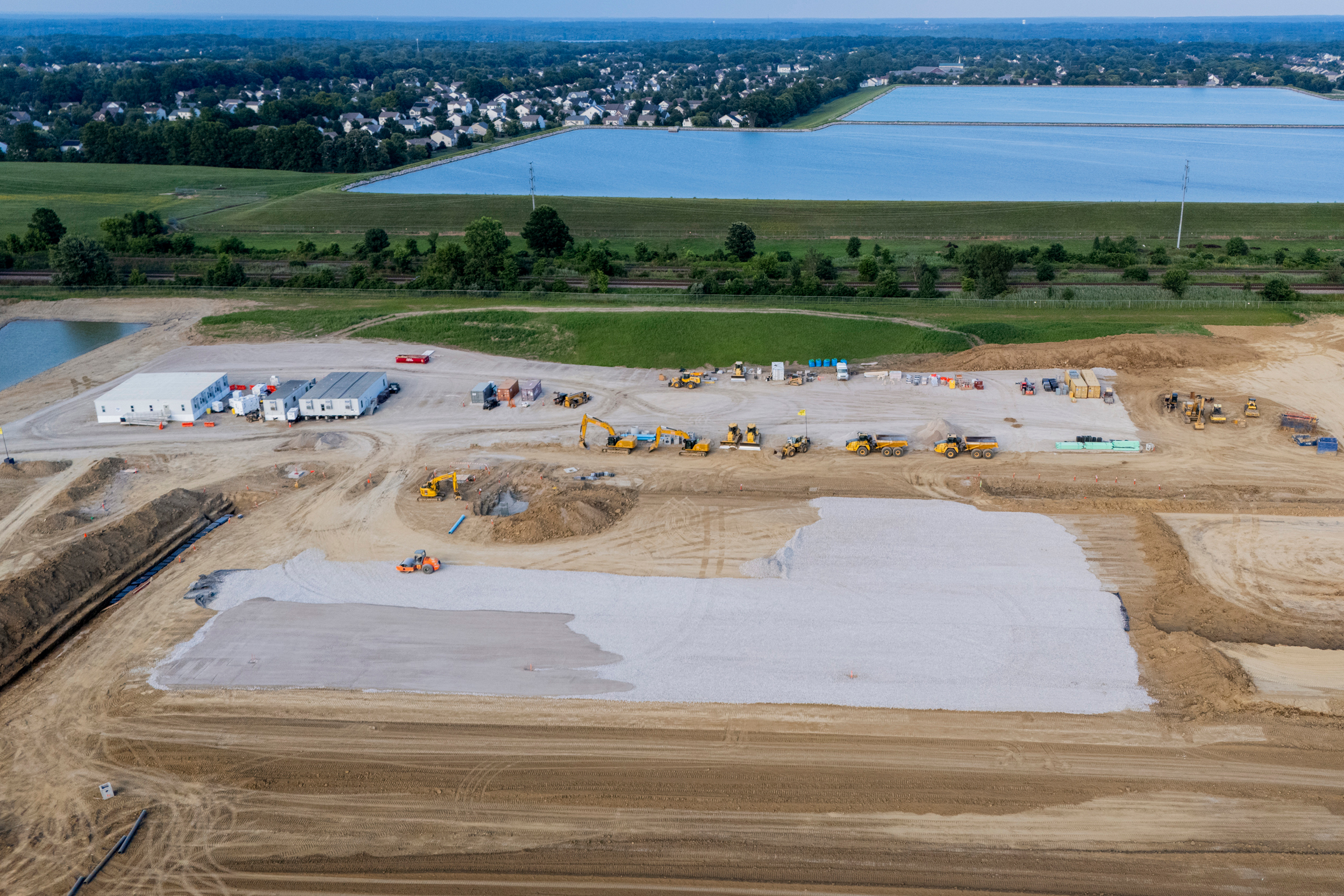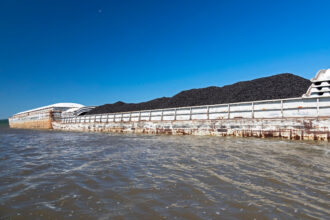The Trump administration has begun prioritizing the review of new, potentially hazardous chemicals used in data centers that public health advocates and environmental attorneys warn could endanger workers, communities and the environment.
While the Environmental Protection Agency, which made the announcement last month, has prioritized new chemical reviews for some industries in the past, advocates said the new EPA effort and an accompanying executive order, “Accelerating Federal Permitting of Data Center Infrastructure,” signed by President Trump go well beyond data centers and benefit the fossil fuel, nuclear and semiconductor industries, among others.
They include what advocates said is unprecedented language that calls for the EPA to “ease” and “reduce” regulations.
“We inherited a massive backlog of new chemical reviews from the Biden Administration, which is getting in the way of projects as it pertains to data center and artificial intelligence projects,” EPA Administrator Lee Zeldin said in announcing the fast-track chemical review. “The Trump EPA wants to get out of the way and help speed up progress on these critical developments, as opposed to gumming up the works.”
The EPA’s language is “hugely broad” and “shocking,” said Maria Doa, chemical policy director with the Environmental Defense Fund, a nonprofit advocacy group.
“I don’t think we’ve seen this blatant language before,” Doa said. “The EPA said it is going to ‘Get out of the way,’ not ‘The EPA is going to do a thorough but expedited review.’”
That could have wide-reaching consequences. “It would affect not only the communities around the data centers but the workers and other communities that are making the components for the data centers,” Doa said.
Big tech companies such as Google, Microsoft, Facebook and Amazon need data centers—typically warehouse-sized facilities filled with computer servers, data storage drives and other network equipment—to process the world’s digital traffic and meet the extraordinary computational demands of the artificial intelligence boom, which is driving demand for more facilities.
Data centers also consume high levels of energy, water—and chemicals. Public health advocates are only now beginning to understand that data centers are a source of chemical pollution, especially from PFAS, so-called “forever chemicals,” which are used to cool some facilities. PFAS, per- and polyfluoroalkyl substances, are a class of about 16,000 chemicals, and many are linked to cancer and a range of serious health risks.
Data centers and supporting industries regularly use PFAS gases, or f-gases as refrigerants used to cool electronics. Though f-gases are generally less toxic than some other PFAS, there is very little health and safety information for most, and that which does exist still points to concerning toxicity. Some f-gases are also potent greenhouse gases.
In a statement sent to Inside Climate News, the EPA defended the program. “Nothing in EPA’s announcement suggests that the agency intends to use this effort to circumvent the law,” a spokesperson wrote. “This is a ridiculous claim made by special interest groups in an attempt to distract from the work the Trump administration is doing to make our work more efficient and make our country the AI capital of the world.”
The EPA’s move to prioritize approval of new chemicals used in data centers comes as local communities mobilize to thwart proposed data center projects. Across Michigan, advocates are working to derail, or have derailed, plans for at least seven centers. Residents fear impact on their utility bills, climate impacts, changes to their communities’ rural characters and pollution from diesel generators. The chemical pollution, often through wastewater discharges, adds a new layer.
Meanwhile, Michigan has identified over 300 sites contaminated with PFAS and is struggling to address those and rein in pollution in its surface and groundwater.
“We’re adding new sources of potential contamination before we even have a grasp on the extent of the impact of how the PFAS already here are impacting the environment and our bodies,” said Tim Minotas, Sierra Club Michigan’s legislative director. “If the EPA is going to be speeding up these reviews for new chemicals, some fluorinated without any sort of safeguard, then the risk is going to land on residents.”
“Incredibly Dangerous”
Newly developed chemicals that industry wants to use are subjected to environmental and health reviews under the Toxic Substances Control Act (TSCA), and the EPA often imposes restrictions on those that create an “unreasonable risk.” The process can take months, and new chemical reviews occur in “blackbox,” advocates say.
In announcing its expedited chemical review for data centers, the EPA said that it facilitated Trump’s vision of AI at the heart of a “hypercompetitive global race” and was “focused on strengthening America’s energy foundation and ensuring our nation remains the global leader in AI and the infrastructure that powers it.”
Trump’s executive order covers broad swaths of multiple industries, and could include chemicals used for transmission lines, natural gas pipelines, substations, switchyards, transformers, natural gas turbines, coal power equipment, nuclear power equipment, geothermal power equipment and electrical infrastructure. The order also covers the semiconductor industry, which has been found to pollute air and water with PFAS.
The wording in the executive order and EPA announcement is so broad that it may include suppliers further upstream, and the program’s limits are unclear, advocates said.
“This is really telling industry, ‘Just contrive of any connection between your substance and the vast scope of this program, and you can get prioritized review,’ and I think that is incredibly dangerous,” said Jonathan Kalmuss-Katz, an attorney with Earthjustice, which has litigated on EPA new chemical programs.
The EPA said in its release that the program is intended to “reduce the backlog” of new chemicals, but data centers are being built and are operating without these compounds. “There is no demonstrated need for this prioritization,” said Dan Rosenberg, an attorney who litigates on toxic chemical laws for the Natural Resources Defense Council.
This story is funded by readers like you.
Our nonprofit newsroom provides award-winning climate coverage free of charge and advertising. We rely on donations from readers like you to keep going. Please donate now to support our work.
Donate NowHe noted that the program also comes after the 2016 congressional approval of an update to the Toxic Substances Control Act, which aimed to strengthen the new chemical review process. The Senate unanimously approved the update.
The Trump administration’s actions do the opposite, Rosenberg said, and it is proceeding “as if this broad rhetoric about regulatory relief can somehow override congressional mandates to review chemical safety to protect the public—that’s not how it works.”
“That’s how we got a PFAS crisis in the first place—PFAS zipping through the new chemical program without adequate review or restrictions,” Rosenberg said.
“It Isn’t Just About Fast Tracking”
How the EPA reviews new data center chemicals remains to be seen, advocates said, but the agency has a spotty record when it expedites the process.
During the first Trump administration, the agency permitted industry to utilize a PFAS exemption that allowed the chemicals to be sent to market with little scrutiny in under 30 days, including compounds that were “lethal if inhaled” and “corrosive to the skin.”
When the EPA announced last year that it would fast-track the approval of semiconductor PFAS, it claimed to have put in place a “framework” to ensure the chemicals are safe, but did not provide details. The agency generally uses standardized formulas to assess health and environmental risks that watchdog groups have said are not fully protective, and it relies on industry health and safety data to make decisions.
Under the Biden administration, the EPA announced it would “streamline” biofuel chemical reviews, which the agency touted as a climate solution, even though it included highly toxic chemicals that would be produced by burning plastic waste. The order also covered mixed metal oxides used in batteries, but the scope and thoroughness of the review were “opaque,” Klamuss-Katz said.
The EPA found many of the chemicals created what Kalmuss-Katz characterized as “astronomical risks” to workers and the surrounding neighborhoods near the Louisiana plant that would produce the compounds. Kalmuss-Katz and Earthjustice challenged the approval in court, and EPA announced it would withdraw the chemicals’ approval, though Chevron is still seeking permission to use them.
But the new Trump order is worse because it goes further in scope, Kalmuss-Katz said, and “it isn’t just about fast tracking.”
“The EPA is also making clear it wants to lessen regulations and remove barriers for the chemicals going to market, and when you’re talking about PFAS and other compounds that can cause serious harm—that regulation is what keeps people safe,” Kalmuss-Katz said.
About This Story
Perhaps you noticed: This story, like all the news we publish, is free to read. That’s because Inside Climate News is a 501c3 nonprofit organization. We do not charge a subscription fee, lock our news behind a paywall, or clutter our website with ads. We make our news on climate and the environment freely available to you and anyone who wants it.
That’s not all. We also share our news for free with scores of other media organizations around the country. Many of them can’t afford to do environmental journalism of their own. We’ve built bureaus from coast to coast to report local stories, collaborate with local newsrooms and co-publish articles so that this vital work is shared as widely as possible.
Two of us launched ICN in 2007. Six years later we earned a Pulitzer Prize for National Reporting, and now we run the oldest and largest dedicated climate newsroom in the nation. We tell the story in all its complexity. We hold polluters accountable. We expose environmental injustice. We debunk misinformation. We scrutinize solutions and inspire action.
Donations from readers like you fund every aspect of what we do. If you don’t already, will you support our ongoing work, our reporting on the biggest crisis facing our planet, and help us reach even more readers in more places?
Please take a moment to make a tax-deductible donation. Every one of them makes a difference.
Thank you,













